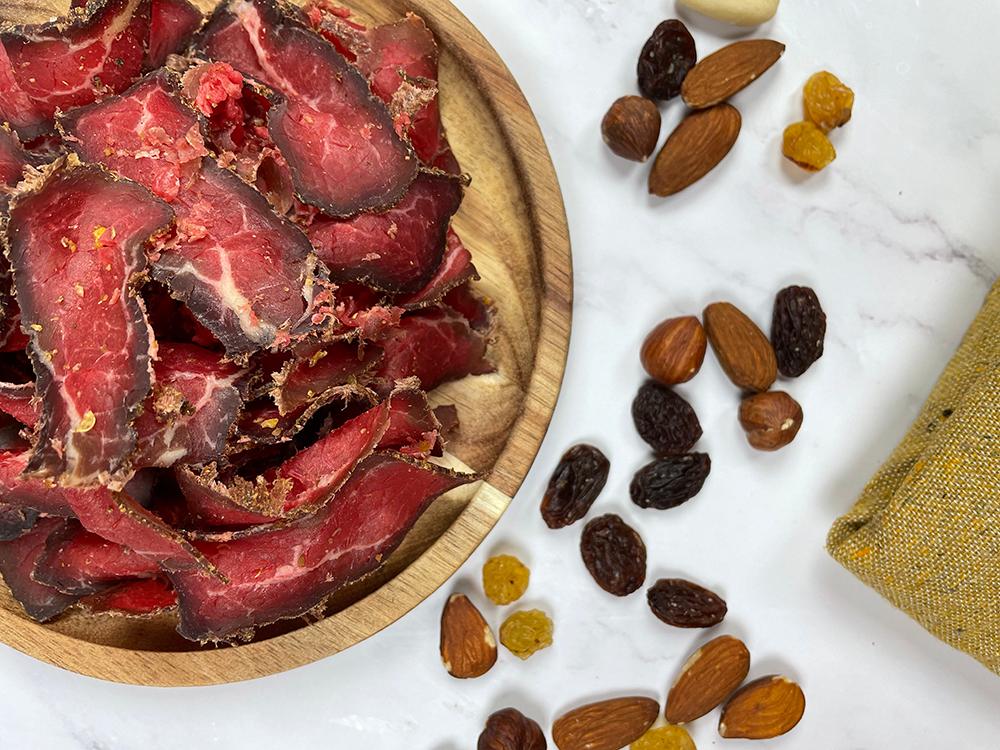The process of making this traditional, deliciously meaty South African snack is simple, though getting it just right can be tricky. In principle, biltong is made by marinading, spicing, and airdrying strips of meat. However, the exact process and recipe vary according to personal taste and the tools and ingredients that are available.
In this article, we’re going to look at the main steps involved in making biltong.
But first, a little history
The concept of biltong was invented by the Dutch pioneers in South Africa, when they needed a way to preserve meat during long journeys across the country. While the basic principles of biltong-making have remained the same, the process has been refined over the years, resulting in all the varieties of biltong that we know today.
The biltong-making process
- Step 1 - Choose the meat
Traditionally, biltong is made with game or beef, but other types can also be used. At Runder, we ensure great taste and quality by using only 100% premium Dutch beef to make our biltong.
- Step 2 – Cut the meat
For optimal results during the drying process, the meat is cut into long, thin strips, also referred to as steaks or slabs.
The meat is cut with the grain. Mostly, all the fat is removed, resulting in lean, protein-packed biltong. However, it is also possible to leave a layer of fat on the edge of the strips, which produces the tasty and chewier fatty biltong that some people prefer.
- Step 3 – Season the meat
It is during this step that some of the biggest variations occur. At Runder, we use a slow marination process and a selection of aromatic spices to flavour our biltong. This gives the flavour enough time to draw into the meat and produces the tasty biltong that our customers love.
About the marinade
If biltong is marinaded, the marinade always contains vinegar to kill off potentially harmful bacteria. Some people choose to skip the marinading process and rub or rinse the meat with vinegar instead.
Biltong spices
In addition to salt, the two main ingredients that must be included in the biltong spice are black pepper and coriander. These two spices give biltong its characteristic taste. In addition, the oil from the coriander seeds also helps to prevent microbial growth. Other ingredients, such as garlic, paprika, and chilli flakes (for spicy biltong), are often also used.
- Step 4 – Air-dry the meat
Once properly seasoned, the steaks or slabs are hung up in a cool, dry place to air-dry. It is essential to ensure movement of air and to avoid humidity during air-drying, otherwise there is a risk of mould.
The duration of the drying process is approximately three to seven days, but can vary considerably depending on the climate, the equipment used, and the level of moistness desired.
Unlike beef jerky, biltong is always air-dried and never cooked or smoked.
- Step 5 – Store the biltong
To ensure food safety, biltong must be properly stored. This means keeping it in paper bags in the fridge, or in vacuum-sealed bags. In humid climates, such as the Netherlands, it is particularly important to pay attention to the storage instructions so that you can still enjoy your biltong after a day or two (if you are able to resist the temptation to eat it all in one go, of course).
Want to know more about the biltong-making process at Runder? Feel free to contact us with any questions you may have.

